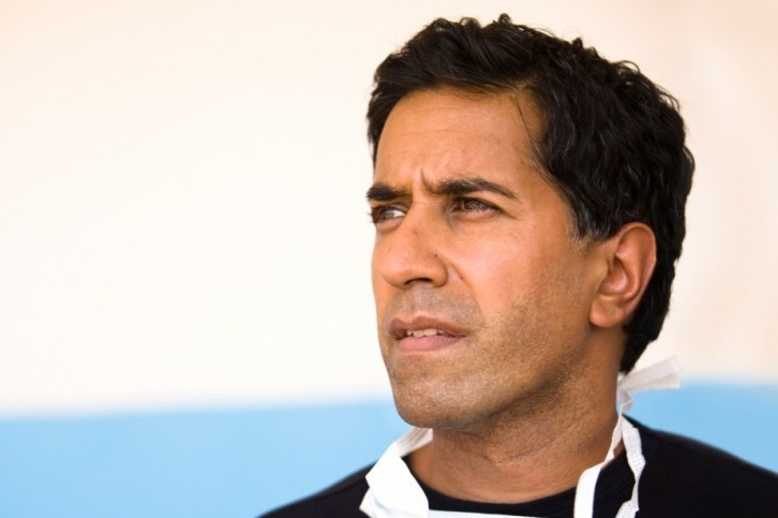
Eyck Freymann: How to Break China’s Minerals Chokehold
Why the allies need a multilateral commercial stockpile This essay is based on a Hoover History Lab working paper, co-authored with Joshua Stinson, William Norris,…
Thought Leader: Eyck Freymann

A growing number of states are turning the screws on Big Tech, the internet and social media. On Wednesday, Montana became the first state to completely ban TikTok, although many are skeptical that the controversial new legislation will be enforceable.
Other moves include laws that aim to tighten regulations on social media platforms in general, like those recently enacted by Arkansas and Utah.
There are three worthwhile goals that appear to be at least part of the motivation behind legal maneuvers like these: preventing companies from collecting data on us and our children, protecting kids online and balancing your rights with your responsibilities when you post content to online platforms. For example, if a platform hosts content that leads to someone being harmed, can it then also held responsible? So far, the answer has been no, according to a recent US Supreme Court decision.
For me, though, the discussions around smartphones and social media are very personal. As a dad of three teenage girls, I am often left wondering about the impact of so much screen time on their brains.
Like many parents, I thought of devices for my kids as glorified toys that could entertain them if needed and provide a valuable communication tool in case of an emergency. That changed after I read a book by Jean Twenge called “iGen: Why Today’s Super-Connected Kids Are Growing Up Less Rebellious, More Tolerant, Less Happy – and Completely Unprepared for Adulthood – and What That Means for the Rest of Us.
In her book, Twenge, a professor of psychology at San Diego State University, makes the case that Gen Z (or iGen, as she calls them) is growing up in a way that is fundamentally different from previous generations. She told me that some of the biggest behavioral changes ever recorded in human history coincided with the release of the smartphone.
Twelfth-graders now are more like eighth-graders from previous generations, waiting longer to take part in activities associated with independence and adulthood, according to Twenge. They are less likely to go out with friends, drive, go to prom or drink alcohol than Gen X 12th-graders were. They are more likely to lie on their beds and scroll through endless social media feeds. They may be physically safer, but the long-term effect on their mental and brain health is a big question mark.
Twenge told me that she “saw just a very, very sudden change, especially in mental health but also in optimism and expectations … between millennials and iGen or Gen Z.”
What she said made sense but also frightened me. On many topics – for example, neurosurgery – I have a pretty good idea of how to address concerns because I rely on evidence, sometimes collected over decades. But with regard to these new technologies, there was hardly any data to review. Not only did we lack answers to basic questions, we often didn’t even know what questions to be asking in the first place.
As a result, my wife, Rebecca, and I found ourselves in a very unusual – and uncomfortable – situation. Based on very little information, we had to provide critical guidance about what age, how much and what kind of screen time to allow our three iGen daughters.
I know I am not alone. I hear these kinds of concerns all time, from the parents of my kids’ friends as well as from viewers, readers and listeners, which is why my podcast, “Chasing Life,” devoted an entire season to the topic.
Consistent numbers are hard to come by, but according to one 2023 survey by reviews.org, nearly 89% of American adults say they reach for their phones within 10 minutes of waking. That same survey, I was astounded to learn, found that American adults check their phones an average of 144 times a day, or once every 7 waking minutes!
For kids, the statistics are even more worrisome. According to a 2022 Pew survey of the under-18 set, 46% of American teens said they are online “almost constantly.” And 35% said they’re “almost constantly” on one of the five top social media apps: YouTube, TikTok, Instagram, Snapchat and Facebook.
Perhaps none of this should come as a surprise, because there is literally a never-ending supply of material to consume. Consider that in June 2022, an estimated average of more than 500 hours of video were uploaded to YouTube every minute, according to the data company Domo. On Instagram, an estimated 1.3 billion photos are shared per day, according to a photo industry estimate. And as of 2020, Snap Inc. said that more than 4 billion Snaps were sent out every day.
My girls are 17, 16 and 14. They are digital natives and have never known a world without devices. I am often reminded that this is not the world they necessarily wanted but the one we handed them. My youngest daughter told me one day that she wished she were a millennial because that generation had phones but not smartphones or social media, and they weren’t necessarily tethered to them. Nowadays, she tells me, many teenagers feel an obligation to be on social media, or they will feel left behind.
The fact that screens and technology are not only pervasive but necessary is a given in this day and age. But how we deal with all this is not as obvious. I have to say, I learned many things while researching and interviewing experts for this season of the podcast.
If I had to boil things down to three major points, this is what they’d be:
First, have The Conversation with your child. That means sitting down, unhurried and undistracted, and having an in-depth discussion with them, without scolding, without judgment. I did that with each of my girls and learned a lot. Try to discover how and how often they are using their screens, which social media platforms they are on, what they expect to get from their interactions and how those interactions make them feel. Also, ask them if they feel that they have a problem. Their honesty may surprise you and lead to a more productive conversation.
Dr. Michael Rich, co-director of the Clinic for Interactive Media and Internet Disorders at Boston Children’s Hospital and a self-described ‘mediatrician’ who treats youngsters with “problematic media use,” told me he takes his cues from the conversations he has with his young patients.
“Actually, one of the things I do with these young people in the first visit, if I can, if they will let me through the chink in the armor, is try to identify their pain points, the things that they wish were going better, whether it be school or ‘I wish I had more friends,’ etc.,” he said. “I want to look more at what their life is from the time they wake up to the time they go to sleep. So I think that it really has been about, ‘How are you feeling in your life? How are you doing? Are you getting grades in school that are reflective of your capabilities?’ And almost invariably, they’ll say no. And then we’ll explore why that might be.”
Rich said that for many of his patients, overusing technology itself isn’t the problem. Rather, it’s a form of self-soothing behavior – a therapy, if you will – to mitigate other underlying conditions, like anxiety or depression, that need to be addressed.
Next, don’t catastrophize. In all likelihood, you’ll find out your kids are on some type of screen or device more often than you would like, but – this is key – not everyone develops a problem. In other words, don’t assume the worst about the impact that use of technology will have on your child’s brain and development. Most people may not develop catastrophic problems, but it can be challenging to predict who is most vulnerable.
“When it comes to social media, I feel like there’s a reassurance that I can offer here,” said Dr. Keneisha Sinclair-McBride, a clinical psychologist at Boston Children’s Hospital and an assistant professor of psychology at Harvard Medical School. She said social media is not what worries most teens.
The things that stress Gen Zers today would resonate with a teen 30 years ago. “‘Am I going to get into college?’ ‘I had an argument with my parents.’ ‘I’m really anxious when I have to talk in front of class.’ It’s still those same things,” she said.
“It’s not necessarily that social media is the biggest factor. It’s a tool that can be used for good and sometimes as a tool that can be used for not-good, but it’s not the main thing that kids are talking about. It’s something that is part of their lives, but their lives are these complex, rich things that have hopes and dreams and problems just as they’ve always had,” she said. “So that’s good. It’s not like every kid is going to get mental health treatment because social media is ruining their life. That is definitely not the case at all.”
And lastly, in the words of author and science journalist Catherine Price, remember that life is what we pay attention to. Think about that for a moment; it is such a simple idea, but it is so true. I find it both deeply inspirational and empowering because it implies that we have it within our control to determine what our lives are like.
The next time you go to pick up your phone, Price wants us to remember the three Ws: What for? Why now? What else?
“Once you notice your phone’s in your hand, you just ask yourself those questions: What did I pick it up to do? Then you ask yourself, Why now? What was that time-sensitive reason you picked it up? Sometimes you actually will have a reason, like it’s your friend’s birthday [and] you need to get a gift for them. Most of the time is going to be an emotional reason,” she told me: for example, you’re experiencing anxiety, so you pick up the phone to be soothed; or boredom, so you use it as a distraction; or loneliness, so you can feel more connected.
“So identify what your brain is actually after, and then you can move to the third step – the What else? – which is to ask yourself, what else could you do in that moment to achieve the same result? Could you actually use your phone to call a friend instead of going to social media, if you’re having a moment of loneliness? Could you go for a quick walk around the block if you need a break from work instead of going over to the news?” Price asked. “It doesn’t really matter what the answer is. … The point is just to make sure that when we’re using our devices or whatever apps are on our devices, it’s the result of an intentional choice instead of just our minds and our brains being hijacked.”
While speaking to all of these experts during this season of the podcast, I have played around with different metaphors to best capture and describe the experience of problematic media use, as Rich calls it. Is it an addiction, like some people experience with nicotine, drugs or alcohol? Are screens and apps like slot machines, designed to keep us mindlessly playing? To some extent, there are similarities, but there is an important difference as well. Unlike alcohol, drugs, cigarettes or gambling, it’s not really feasible to completely step away from technology.
Many of us, including our children, find ourselves on screens a lot: for work, schoolwork and homework, to communicate with one another, to get stuff done and to relax, whether that’s scrolling, binge-watching or gaming. It wouldn’t be right to say we are addicted to our devices, because addiction therapy often requires abstinence, which is not possible with devices. A better metaphor might be food, which we all require as well. With both, however, we are too often gorging ourselves. We know we shouldn’t consume all day, and we have to be careful of what we choose to ingest.
I also like to think of technology and devices like a car or a powerful tool: They are efficient and impressive in their abilities to perform certain tasks, but we have to learn to control them and not let them control us. We recognize the utility of a car while being trained in its dangers. We should probably be thinking of small supercomputers the same way, rather than a toy to placate young children.
“It didn’t exist when we were young, so we are learning how to manage it ourselves,” Rebecca said, mirroring my own sentiment. “And it’s a learning curve for us and a learning curve for children. But almost as quickly as we are adapting to the phone, we are adapting to that learning curve.”
All three of my daughters learned through trial and error to achieve balance, each in her own way. And even though Rebecca and I might have come up with more targeted Gupta House rules, the guardrails we set up were consistent and thoughtful, if not perfect.
As my kids remind me: Technology, screens, apps and smartphones are neither good nor bad, they just are. But Gen Z’s acceptance of this world they inherited isn’t blind; they want us to fix it. Young people like Emma Lembke, an advocate and a sophomore at Washington University in St. Louis, are demanding change, and people – lawmakers and maybe even big tech execs – are beginning to listen.
“Make no mistake, unregulated social media is a weapon of mass destruction that continues to jeopardize the safety, privacy and well-being of all American youth. It’s time to act,” Lembke told Congress in February.
Lembke, who had her own struggles with problematic media use, told me, “Ten years from now, social media will not be what it is today. It will be what members of my generation build it to be. We want to build differently. We want to build it right.”
Some of those changes involve regulations, for example, to ensure more transparent algorithms so that users’ innocent searches don’t result in inappropriate results (for example, searches on TikTok for healthy recipes that can quickly devolve into disordered eating), an end to autoplay to create space for a viewer to decide whether to keep scrolling, and image filters that don’t subtly make faces conform to European/White beauty standards with lighter skin or thinner noses, as Sinclair-McBride told me. Lembke said she and her peers are concerned not just for their own generation but for the ones that follow.
My kids, along with many others I have interviewed, don’t want to see an outright ban on TikTok, and they already have strategies to circumvent that. Instead we all have to learn – and help our children learn – to make better decisions about the types of content we consume as part of our digital diet.
As Sinclair-McBride pointed out, we possess something very valuable that Big Tech companies want: our time and attention. We need to be judicious about how we allocate these precious resources – not just because they are important to TikTok, Snap or Instagram but because they are priceless for us, too.
Not sure how to start a conversation with your kids about internet and social media use? Here is a list of conversation prompts that might help.
Eyck Freymann: How to Break China’s Minerals Chokehold
Why the allies need a multilateral commercial stockpile This essay is based on a Hoover History Lab working paper, co-authored with Joshua Stinson, William Norris,…
Thought Leader: Eyck Freymann
Chris Miller: Robotics Manufacturing: The Rise of Japan
“To the Americans, a robot is a computer attached to a mechanism. To Japanese, a robot is a mechanism attached to a computer.” The future…
Thought Leader: Chris Miller
Dr. Sanjay Gupta: A New Understanding of Parkinson’s Disease
Parkinson’s disease, a progressive movement disorder whose hallmark is damage to the dopamine-producing neurons in the brain, afflicts almost 12 million people worldwide. And the…
Thought Leader: Sanjay Gupta

